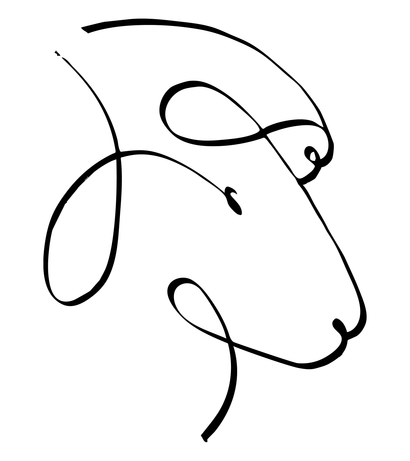Free shipping on all domestic orders over $150
Free shipping on all domestic orders over $150
Shop
Add description, images, menus and links to your mega menu
A column with no settings can be used as a spacer
Link to your collections, sales and even external links
Add up to five columns
Add description, images, menus and links to your mega menu
A column with no settings can be used as a spacer
Link to your collections, sales and even external links
Add up to five columns

How fiber blends make better yarn – and how Noro does it best
June 10, 2025 4 min read
It can be so confusing to look at yarn labels. Cotton and cashmere, wool and alpaca, wool and cotton, cotton and yak. And then you pick up a skein of Noro and it has four or five different fibers in there. What the heck?” Right?!?
It’s a good question. Wool is pretty much perfect for knitting, but that's not to say it can't be enhanced. Same with other fibers we love. The truth is that some of the very best yarns are blends. Think of it like wine, Just as carefully combining different grapes allows vintners to create a particular style of wine, combining different fibers allows yarn makers to build just the yarn they want.
Fiber strengths (and weaknesses)
Each fiber has its strengths—and its quirks.
- Wool is elastic, warm, and springy—IMHO there really are no down sides
- Silk has gorgeous drape and shine--takes dye well—but lacks stretch and recovery
- Mohair lustrous, elastic, bouncy, and warm - it's expensive
- Cotton is breathable and crisp—but can feel heavy
- Alpaca is buttery soft and extremely light, but has little structure or recovery.
- Cashmere is soft and luxe—like mohair, it's pricey
- Linen is lightweight and cool—but has no give and softens slowly.
Blending fibers balances these characteristics to highlight the strengths and diminish any weaknesses of each. Blends can enhance how yarns take dye, how they wear over time, and how they respond to blocking. It’s both art and science—and no one does it quite like Noro.
How does Noro choose fibers for their yarn?
Noro’s blending philosophy is grounded in a deep respect for nature. They famously avoid chemical treatments, preserving the character of each fiber and allowing its beauty to shine. Every blend is chosen with care—for texture, hand, dye uptake, and sustainability.
Common fibers in Noro blends include:
- Silk for luster, strength, and dye absorption
- Wool for elasticity, moisture wicking, and structure
- Mohair for luster, elasticity, and sheen
- Alpaca for softness
- Cotton for breathability
- Linen for breathability, durability, and moisture wicking
- Viscose for drape and sheen (viscose is the generic term for rayon)
- Polyamide for elasticity, durability, and moisture wicking
Some examples of Noro’s best fiber blends
Silk Garden (45% silk, 45% mohair, 10% wool)
Silk and mohair both have a beautiful sheen. With mohair's elasticity, they combine to create a luxurious yarn with a beautiful hand, intense colors, and great durability. The silk drinks up the dye and has a reflective quality that makes Silk Garden seem to glow with an inner light. The wool in there gives a smidge of earthiness to this yarn.
choose Silk Garden when luxury, sheen, warmth, and color saturation are priorities for colder weather garments and accessories
Akari (26% silk, 26% cotton, 25% viscose, 12% wool, 11% polyamide)
Cotton and silk in equal parts give Akari and Akari Solo softness and sheen. The silk allows for deeper more intense colors as well. Viscose adds drape. Since this is a summer/year round yarn, a smidge of wool adds bounce, as does polyamide which also increases Akari's structural integrity and durability.
Choose Akari when you want a year round yarn with a soft hand and rich colors.
Kompeito (35% cotton, 20% viscose, 20% wool, 15% polyamide, 10% silk)
Cotton, wool, and viscose balance breathability, structure, and drape while silk gives rich colors and sheen and polyamide gives strength and durability.
Choose Kompeito for soft, lightweight summer garments with rich colors and good structure
How do fiber blends benefit your knitting?
When you understand what each fiber brings to the blend, you can make better choices for your projects. Ask yourself:
- Do I want structure or drape?
- Am I knitting for summer or winter?
- Will this piece need to stretch or keep its shape?
Blended yarns give you more flexibility, better performance, and a more satisfying experience both in the making and the wearing. Noro takes that a step further, combining natural fiber blends with extraordinary color styles (like we talked about last week) to make each skein a work of art.
Note: yarn blends are expressed in percentage by weight, so lighter fibers like alpaca, cashmere, and angora, may only be 15%-20% of the total weight, but they represent a much larger percentage of the volume and can have a significant impact on the yarn.
What fiber blends do you love?
Are you a silk-blend fan? Do you love a cotton-linen mix for summer? I’d love to hear what’s on your needles—and help you choose a blend that fits your next project perfectly.
Leave a comment, stop by the shop, or reach out—We're here to help!
Warmly,
Ellen
p.s.
Want to experience these blends in person?
Come join us for our Noro Trunk Show, running from June 14 through June 24, with a special event on Thursday, June 19 from 5–7pm. You’ll be able to try on garments, explore yarns up close, and enjoy Japanese-inspired snacks while immersing yourself in the world of Noro.
Not local? Join us for our Trunk Show Try On live, Wednesday, June 18th on YouTube!

